5 Ridiculously LARGE Spiders
5. Desertas wolf spider
Found only in 1 valley on the island of Madeira off the coast of Portugal is the Desertas Wolf Spider. This massive spider measures a body length of 1.6 inches or 4 cm and leg span of 4.7 inches or 12 cm. They can easily be identified by the by its black legs with white polka dots. Most spiders catch their prey by laying a trap in the form of a web. Every thread is carefully spaced and placed to capture something flying by or by luring prey onto the web but the desertas wolf spider doesn't bother with any of this. This massive 8 legged spider uses sheer might to catch it's prey. They will pounce on unsuspecting victims which may require a short chase before hand. Their choice foods are millipedes, beetles and even small lizards.
The desertas wolf spider has exceptional vision. They're unique set of eyes allow them to keep track of fast moving prey, which is essential since they aren't using a web to make their catch. They have a row of 4 small eyes with 2 large eyes on top followed by 2 small eyes on of the large eyes. The smallest eyes on top are so far up it gives them great vision of anything above them.
4. Brazilian Salmon Pink Birdeater
This plump bodied dark brown spider has an impressive, or disgusting 10 inch or 25 cm leg span. They were discovered and officially documented starting in 1917. This member of the tarantula family resides in deep undergrowth in the amazon rainforest and grows to full size quite a bit faster than other species of tarantulas. These huge spiders are a sought after pet by collectors and only cost around $50. They are quite popular in captivity and their docile behavior makes them much more handleable than many other large spiders. They eat mice, crickets, frogs small mammals and the occasional bird as their name suggests.
3. King Baboon Tarantula
A big name for a big spider the King Baboon Tarantula sports a leg span of 8 inches or 20 cm. Their rusty brownish red color and furry legs will give anyone with even the slightest fear of spiders chills. They get their name from the fact that baboons commonly eat them. People enjoy having these spiders as pets because of their large size and unique color but they actually make pretty bad pet spiders solely based on the fact that it's ingrained in their dna to be defensive towards primates including humans. The King Baboon Tarantula can’t distinguish if a human handling them is a baboon or not and fears the worst. If they feel threatened they'll rear up onto their back legs, begin to hiss loudly, expose their fangs and start rubbing their legs together.
2. Giant Huntsman Spider
The giant huntsman has this name for a reason, with a leg span of 1 foot or 30 cm this is the biggest in the world when it comes to spiders. This giant spider was discovered in a cave in Laos in 2001. Scientists don't know how they grow so big but their bodies tend to be quite small compared to how long their legs get. Numbers of the Giant Huntsman Spiders have dropped due to demand for people wanting to keep them as pets. This large spider is another one that doesn’t utilize webs to catch their prey but rather hunts them. They have a unique twisted joints on their legs that allow them to rotate the leg making them move more like a crab than a spider. Only a handful of people in the world have spotted these massive spiders with their own eyes in nature which has baffled researchers, considering how large they are.
1.Goliath Bird-eating Tarantula
The top dog when it comes to giant spiders is the goliath bird-eating tarantula. With an 11 inch or 28 cm leg span and as 4.7 inches or 12 cm body length not only are these spiders enormous but are of the heaviest in the world as well. While it's highly unlikely you'll ever see a goliath birdeater in the wild they do live in the upland rainforests of South America. Their name comes from early explorers claiming to have seen one eating a hummingbird. These ground based predators focus on eating earthworms with the odd toad, lizard, frog and small mice when the opportunity arrives. How the Goliath Birdeater deals with this, they have a simple defense mechanism against mammals, hair, long pointy hair. The hairs on their abdomen are scratched off by the goliath themselves when they feel threatened. These hairs are carried airborne around them getting into the eyes and nose of mammals causing a great deal of discomfort.
Sources:
https://www.flickr.com/photos/8373783@N07/2536920007
https://www.flickr.com/photos/briangratwicke/30775431403
Check out some of our other videos:
Top 10 LONGEST LIVING Creatures on Earth
https://www.youtube.com/watch?v=IDaPH_ZGiVw&feature=youtu.be
For copyright matters please contact: titantoplist@gmail.com
Intro music thanks to Machinmasound:
Rallying the Defense:
https://www.youtube.com/watch?v=ruPk4RD19Nw
-
 3:17
3:17
Funny Channel
5 years agoSome of the BIGGEST bugs you'll ever see
186 -
 2:35
2:35
Earth Titan
5 years agoVampire Sea Spider | World's Weirdest Animals
60 -
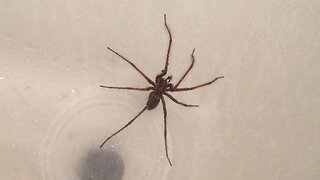 0:32
0:32
GBLynden's RC
10 years agoHuge Venomous Hobo Spider in My Shower! And I was late for work!
75 -
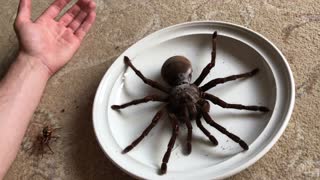 0:13
0:13
ViralHog
6 years ago $78.36 earnedGoliath The Giant Is The World's Largest Tarantula And He's Surprisingly Gentle
212K1 -
 0:20
0:20
trcabroad
5 years ago $5.17 earnedGiant Huntsman Spider Walks Across Woman's Face
27K6 -
 15:39
15:39
Tarantula Collective
8 months ago $0.01 earnedGIANT PURPLE SPIDERS!? Pamphobeteus Tarantula
19 -
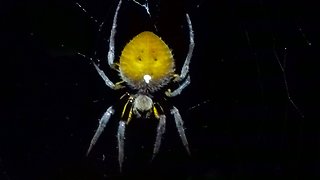 1:52
1:52
WildCreatures
5 years ago $2.57 earnedAmazon night hikers meet fascinating and terrifying creatures
7982 -
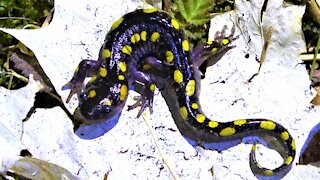 1:35
1:35
WildCreatures
3 years ago $4.05 earnedMysterious & beautiful creatures are found in pond at midnight
3.55K11 -
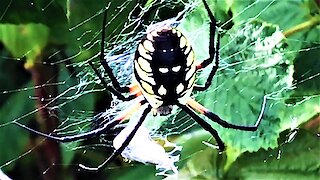 2:13
2:13
WildCreatures
4 years ago $5.17 earnedHusband discovers gigantic spider in wife's raspberry patch
2.94K2 -
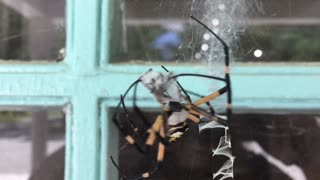 0:32
0:32
ViralHog
5 years ago $0.49 earnedEnticing Mating Ritual Of Garden Spiders Captured On Camera
122